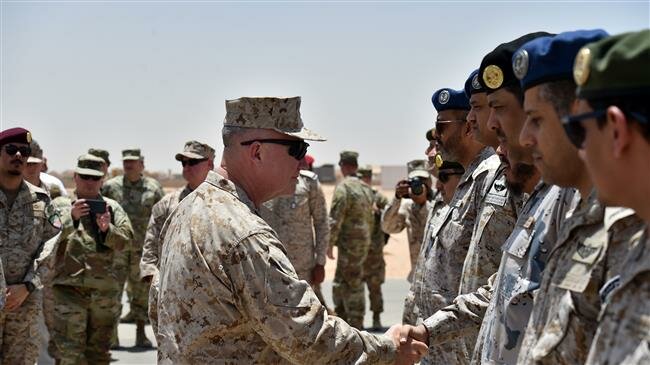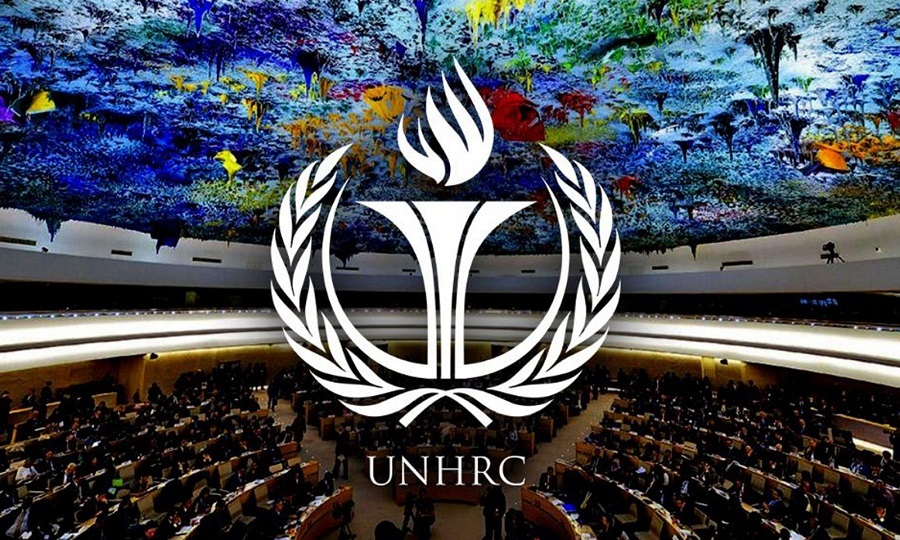
WASHINGTON – The United States has announced to deploy a large number of additional forces and equipment to Saudi Arabia, including air defenses and fighter aircraft, a move that officials say will help the kingdom protect itself against the kind of attacks that last month destroyed its oil facilities.
Pentagon spokesman Jonathan Hoffman said in a statement on Friday US Secretary of Defense Mark Esper authorized the deployment of additional forces, including two fighter squadrons, two Patriot batteries, and a Terminal High Altitude Area Defense System (THAAD), Reuters reported.
“Secretary Esper informed Saudi Crown Prince and Minister of Defense Muhammad bin Salman this morning of the additional troop deployment to assure and enhance the defense of Saudi Arabia,” Hoffman said in the statement.
“Taken together with other deployments, this constitutes an additional 3,000 forces that have been extended or authorized within the last month,” Hoffman said.
Meanwhile, President Donald Trump said Friday that Washington was sending more troops to Saudi Arabia to help them, but added Riyadh had agreed to “pay us for everything we’re doing.”
The four Sentinel radar systems and the Patriot battery are supposed to secure northern Saudi Arabia. Currently, most of the Riyadh regime’s air defenses are closer to the southern border with Yemen, according an earlier report by Reuters.
Yemen’s Houthi Ansarullah movement has been launching missile and drone attacks against targets deep inside Saudi Arabia over the past months in retaliation for the kingdom’s years-long aggression.
The attacks reached their peak on September 14, when the Houthis said they had sent 10 drones to pound major oil facilities of the Saudi state company Aramco in Khurais and Abqaiq.
The drone attack took out the facilities and cut Saudi Arabia’s oil output by more than half, or around 5.7 million barrels a day.
American officials have admitted that Saudi Arabia’s mostly US-made defenses failed to intercept any of the drones, or as they claim, cruise missiles that carried out the precision attacks even though they flew hundreds of kilometers over Saudi territories.
The United States and Saudi Arabia have both blamed Iran for the attacks, ignoring the Houthi claims.
Military commanders and defense leaders from both countries have been working together over the past weeks in order to determine what kind of military is needed to be sent to the region in response to the attack.
Defense Secretary Esper has said that such deployments are a first step and the plan might be expanded to include other things down the road.
The Trump administration claims that Iran is behind the Aramco attacks as well as previous acts of sabotage against international oil tankers passing through the Strait of Hormuz near Iranian territorial waters. Rejecting the claims on Wednesday,
Iranian President Hassan Rouhani has rejected the accusations and invited all countries of the region to form a “coalition of hope” and calm tensions across the region.
Yemeni attack on Aramco facilities costs Saudi $2bn worth of oil output
Saudi Arabia has lost $2 billion worth of its oil production after Yemen’s retaliatory attacks on the kingdom’s vital energy infrastructure last month, a report by the Financial Times says.
The country’s output fell by nearly 1.3mn barrels a day in September, from the previous month, according to data submitted to the Organization of Petroleum Exporting Countries (OPEC) by analysts and consultants, which is used by the cartel to set official production targets.
Saudi Arabia told OPEC’s research arm that production was only hit by 660,000 bpd, according to a monthly oil market report published on Thursday.
Riyadh has sought to emphasize its ability to bring production back to normal levels and the resiliency of the state energy group Saudi Aramco, FT reported Thursday.
The country has tried to maintain its exports using oil in storage. However, energy consultants, analysts and industry executives have questioned the ability of the country’s production and exports to recover to above 9mn bpd within weeks.
It is also unclear how Saudi officials are going to stop such attacks from happening again.
The attack by Yemeni forces last month shut down 5.7 million bpd of Saudi Arabia’s oil production, which represents more than half of the kingdom’s or five percent of global output.
Energy analysts have said the raid was akin to a massive heart attack for the oil market and global economy. It has already plunged OPEC’s oil production to the lowest level since 2011.
The attacks would also cause a decline in Saudi Arabia’s economic growth this year, the World Bank has said in a report.
The report published on Thursday revised forecast about Saudi Arabia’s yearly growth of gross domestic product (GDP) from an earlier 1.7% announced in April to 0.8%, saying the decline was mainly due to oil production cuts caused by September 14 attacks as well as a worsening global outlook.
“The attacks on Saudi oil facilities in September led to a significant supply disruption which is also expected to impact 2019 growth,” said the report about the attacks by Yemen’s Houthis targeting oil facilities run by state-run Aramco company in eastern Saudi Arabia.
Saudi Arabia has constantly denied the attacks would have any impact on the kingdom’s finances, with the government estimating that GDP growth would stand at around 1.9% at the end of 2019.
The attacks caused a serious decline in valuation of Aramco, a company that was planned for a listing in the domestic stock market as part of a bid to finance government programs for economic modernization.
Riyadh said last month it was disappointed by an announcement by rating agency Fitch which had downgraded the country’s credit rating to A from A+ following the attacks.
Follow this link to join our WhatsApp group: Join Now
Be Part of Quality Journalism |
Quality journalism takes a lot of time, money and hard work to produce and despite all the hardships we still do it. Our reporters and editors are working overtime in Kashmir and beyond to cover what you care about, break big stories, and expose injustices that can change lives. Today more people are reading Kashmir Observer than ever, but only a handful are paying while advertising revenues are falling fast. |
| ACT NOW |
| MONTHLY | Rs 100 | |
| YEARLY | Rs 1000 | |
| LIFETIME | Rs 10000 | |









